Checking your car’s engine oil levels is one of the easiest things you can do, yet it is also one of the most important. If your engine is starved of oil, it can cause disastrous amounts of damage. Thankfully, we have created the ultimate guide on how to check your car’s oil for beginners, so you never have to worry about whether or not your car has enough oil in it.
Checking engine oil on older cars is usually done with a dipstick from the engine bay. However, some newer cars have adopted the sensor strategy and now use sensors to read oil levels. We’re going to cover the dipstick method today. By the end of this article, you will be an oil-checking expert.
To make things easy for you, we have bullet-pointed the steps below. However, if you want to read more about the steps, we have further information down the article. We also have information on essential maintenance tips new drivers should know, and oil checking and changing is part of that.
How to check your car’s oil step by step
First things first, you need to make sure your car’s engine is cold and your car is parked on as level ground as possible. In our example, ours is half mounting a dropped curb—not ideal but not dreadful either.
- Put on something you don’t mind getting oil on, like an old jumper, for example.
- Find your bonnet release leaver, usually located inside the car, and pull it to release the bonnet.
- Find the bonnet release catch and pull it to allow the bonnet to open. Don’t forget to place the bonnet support to stop the bonnet from falling.
- Locate the dipstick, usually a brightly coloured loop, in the engine bay, and pull it out.
- Wipe the dipstick with a cloth to clean off the excess oil.
- re-dip the dipstick fully and pull it back out again to collect some oil on the dipstick.
- the oil level between the two kinks on the end of the dipstick is the current level of your engine oil (the bottom kink is the minimum, and the top kink is the maximum).
- Top up your oil if needed.
If you’d like to read more about checking your car’s oil, we have more information below, but these are the fundamental steps that should allow you to check your car’s engine oil levels.
How to check your car’s oil – the ultimate guide
We know that many of you are beginner drivers, so we have created the ultimate guide to checking your car’s oil levels. Checking your car’s oil is vitally important for reasons we will discuss later, but for now, let’s get into more detail about checking engine oil.
Wear something you don’t mind getting dirty
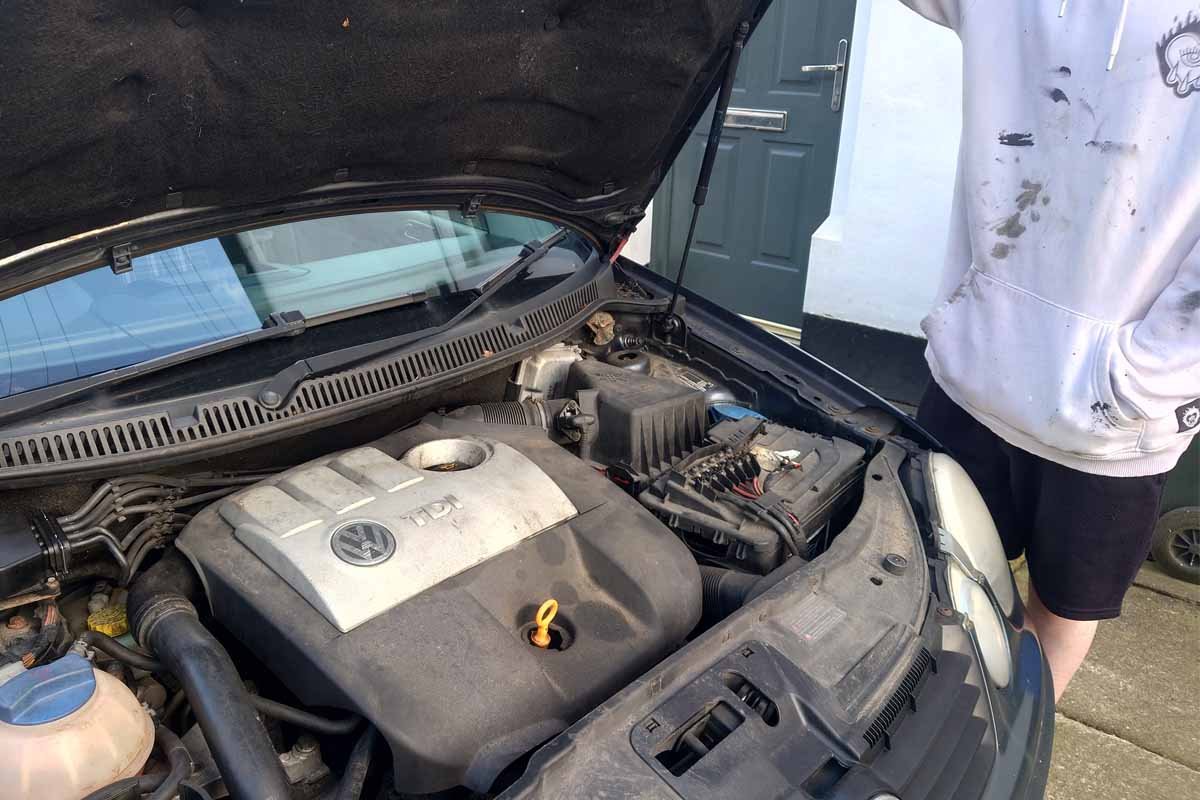
Car engine oil is thick, black, and slippery. The slipperiness is what makes it such a good lubricant. If you get this on a piece of clothing you like, then there’s not a very high chance it’ll come out. Oil stains and penetrates the fibres of clothing very deeply, making it impossible to remove. So you shouldn’t attempt oil changes in your Sunday bests.
Make sure your car is on level ground
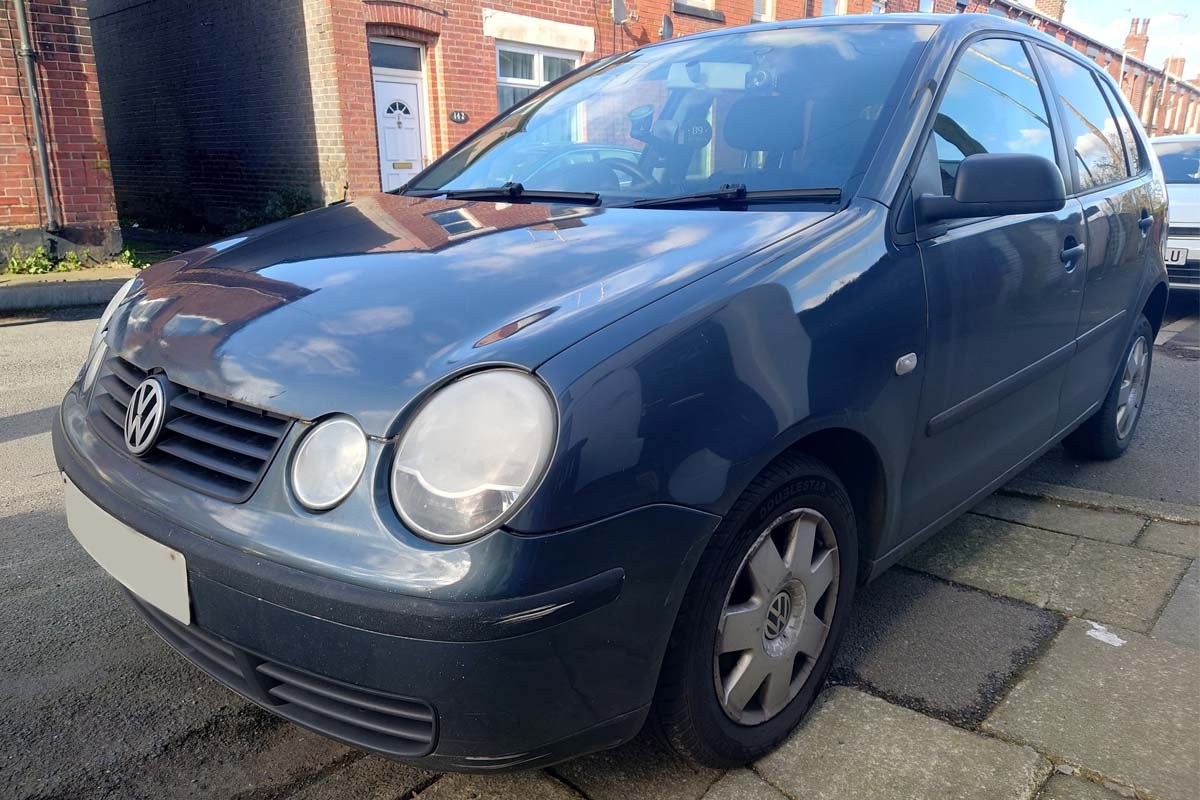
Your car being on level ground is very important for checking engine oil as a beginner or an experienced driver. This is because the oil in the oil pan at the bottom of the engine needs to be level to get an accurate reading. If the car is slumped over to one side, the oil will pool and give you a lower or higher reading depending on which side the dipstick is on.
Very small changes in elevation are okay but should be avoided if possible. For example, our car is partially mounted on a very thin dropped curb, which isn’t ideal but is the best we have.
Make sure your car’s engine is cold (or has been off for around 10 mins after use)
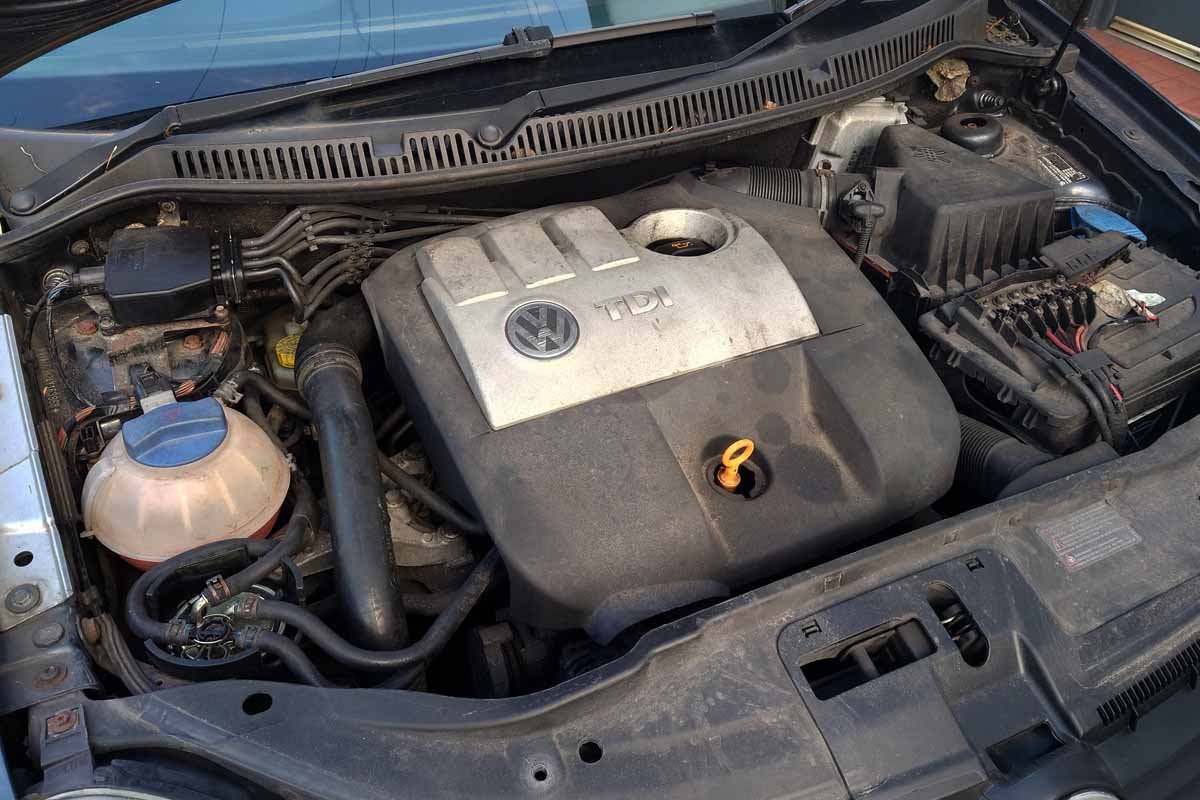
Car oil is usually read when cold; however, some car oil should be checked after a brief warm-up. It’s best to consult your car owner’s manual to see whether your car is a hot or cold car. If you’re unsure, check it cold.
Cold engines have all of the oil in the bottom of the engine in the oil pan. This is where your oil level is read from. You want all the oil to be here to get an accurate reading from your dipstick. If your car has been on for a while, it’s best to wait for 10 minutes or so to let the oil in the engine drain to the oil pan so you can get a better reading.
You can’t read the oil that is left over in the engine with the dipstick; plus, reading your car oil when cold has the added benefit of not accidentally burning yourself on the oil.
Locate the bonnet release lever
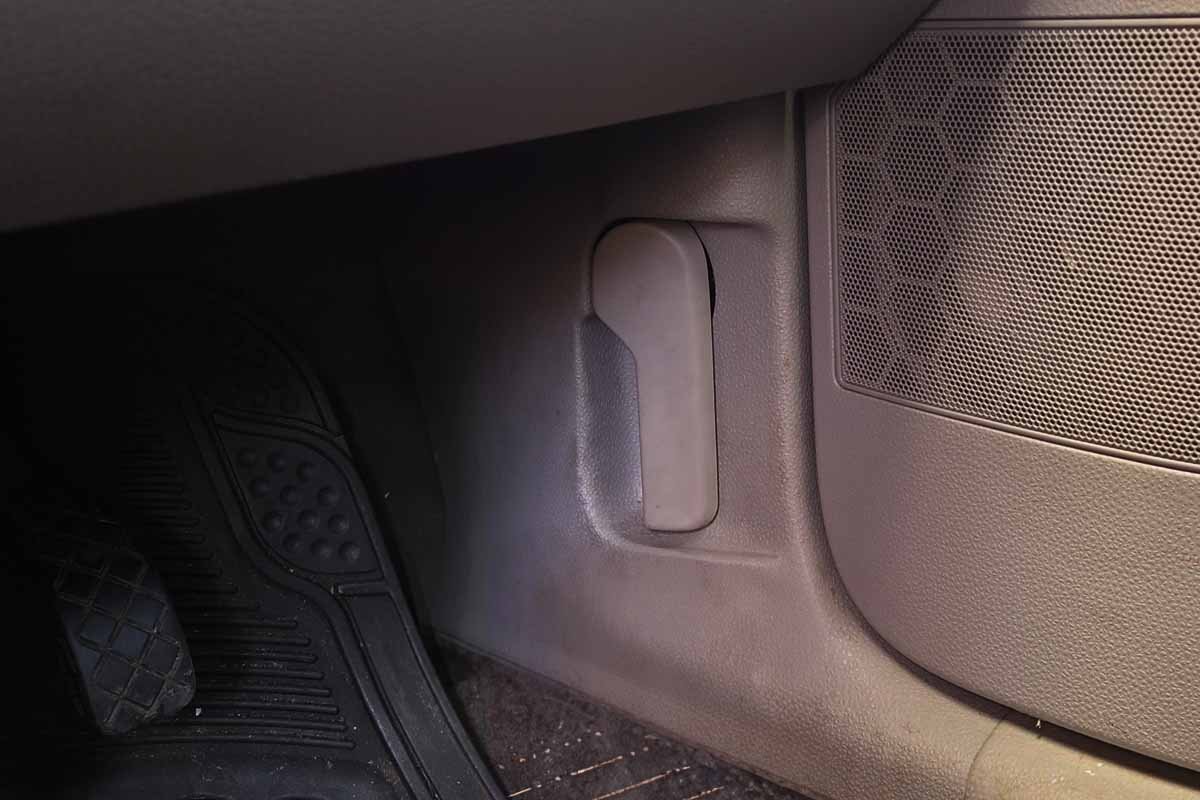
The bonnet release lever pops the bonnet up ready to be lifted. The lever is usually in the car cockpit, other times by the driver’s feet or the passengers. You can’t really miss it; however, it will look different in different cars. Some car manufacturers mark it; some don’t. If you can’t find it, a quick Google search or a read through your car’s owner’s manual should help you locate it.
In some cases, the bonnet release could be electronically controlled, but there should always be a manual override for emergency use or in case your car is not running.
Release the bonnet with the bonnet release catch
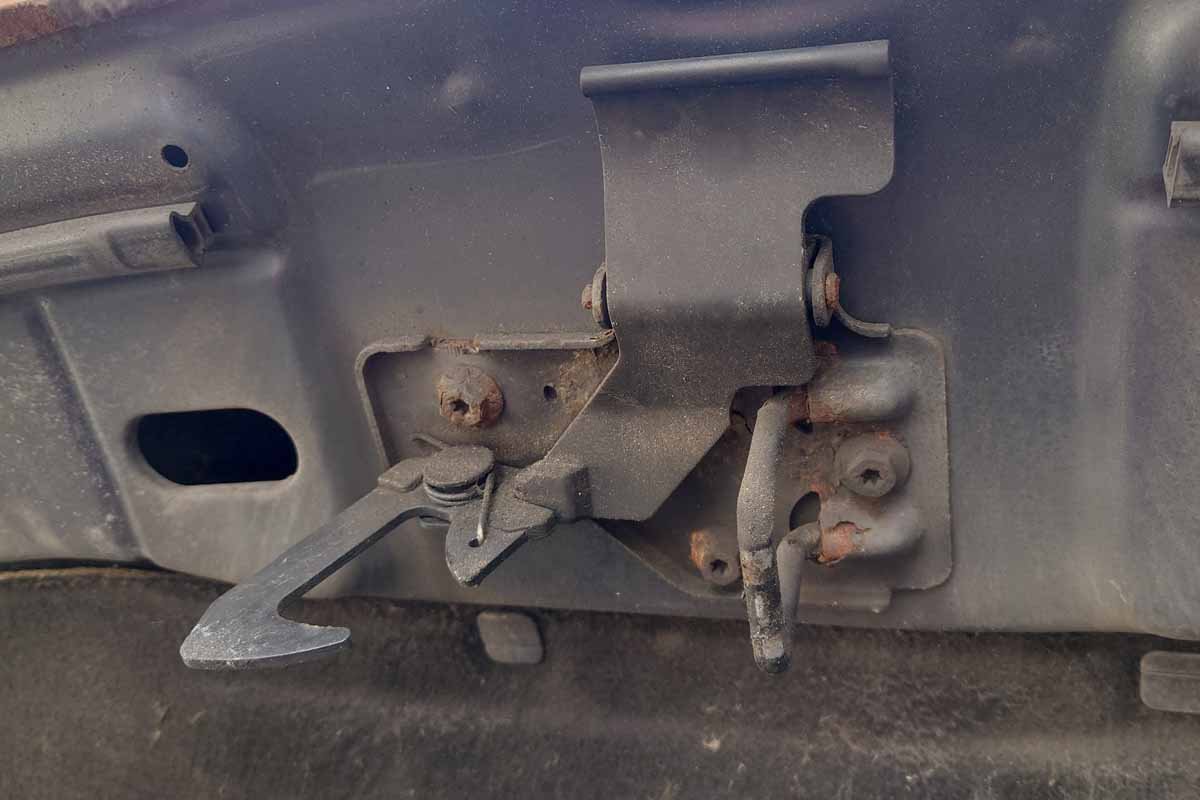
Most cars also have a bonnet release catch that prevents the bonnet from flying open while driving. You can find the bonnet release catch by running your fingers under the lip of the released bonnet and finding a lever that you can press with your fingers—usually in an upward motion.
The release catch is usually somewhere toward the centre of the bonnet, but it is not always dead in the middle. Once released, it allows the bonnet to be lifted and the engine to be accessed.
Locate the dipstick
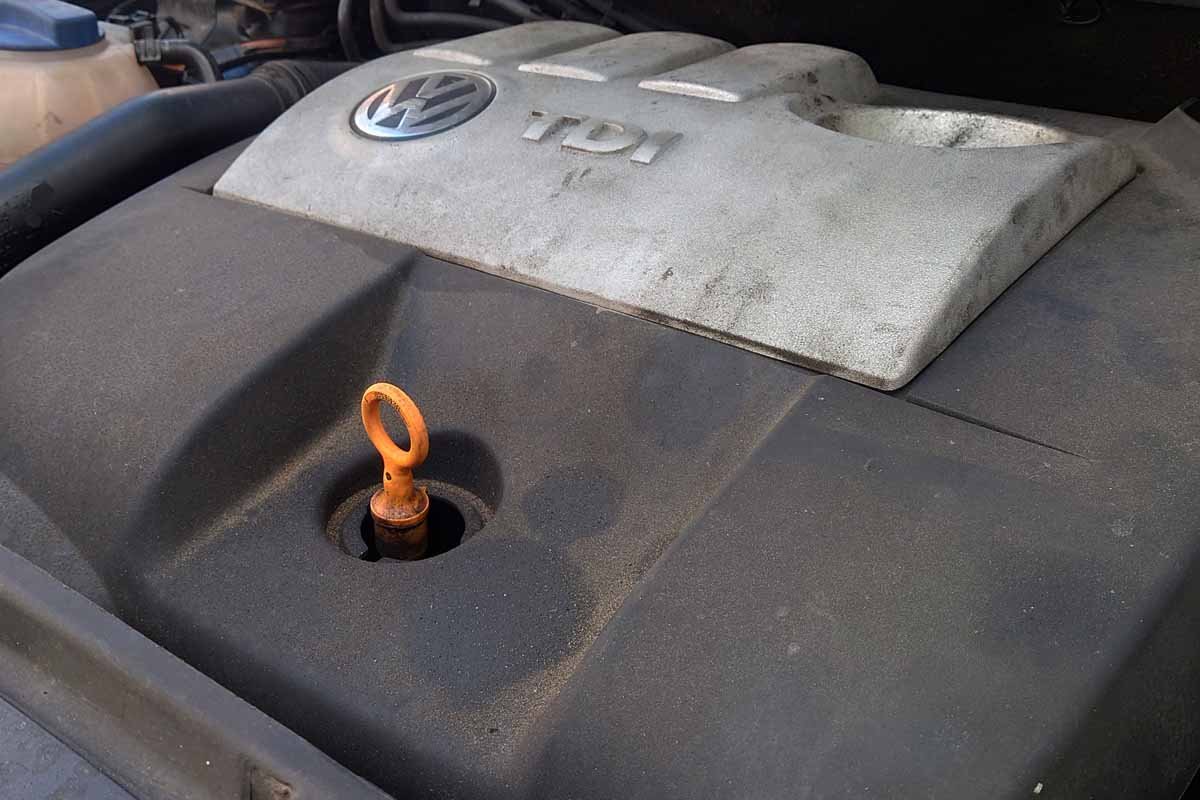
The Dipstick is the instrument you will use to measure your car’s oil level. It is usually a brightly coloured loop and easy to find. In our case, it’s right in the centre toward the front of the engine bay. The dipstick reaches down from the top of the engine to the oil pan at the bottom, which is how we measure the car’s oil level.
Pull out the dipstick and wipe it with a cloth
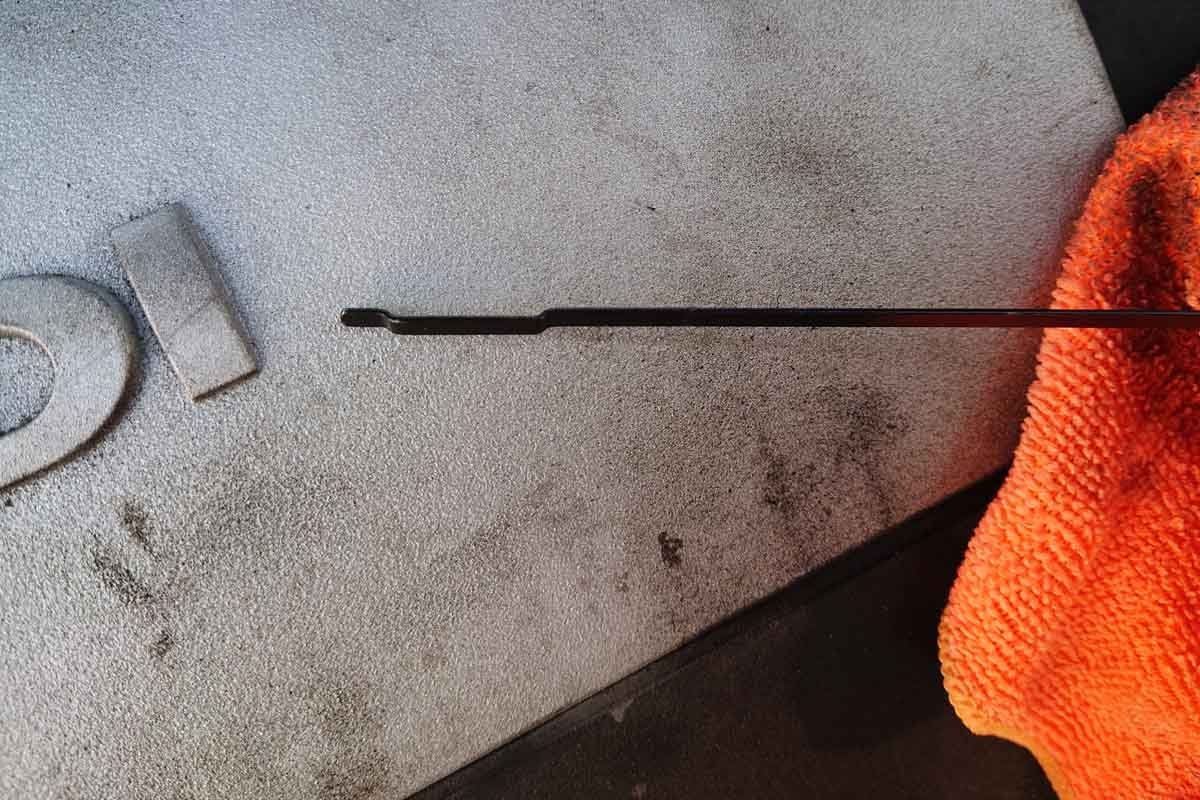
The dipstick pulls out in an upward motion. It can sometimes be a little stick, so don’t be afraid to give it a pull. Take care not to bend or damage the dipstick or let any dirt fall into the dipstick hole.
Wipe the excess oil off the dipstick with a cloth you do not mind ruining. The oil will penetrate the fibres of the cloth and be very unlikely to come out. We need to do this to get an accurate reading of the current oil level. The dipstick was probably in there for a long time and will have gathered splashed oil that likely exceeds our current oil level.
Re-dip the dipstick and pull it out
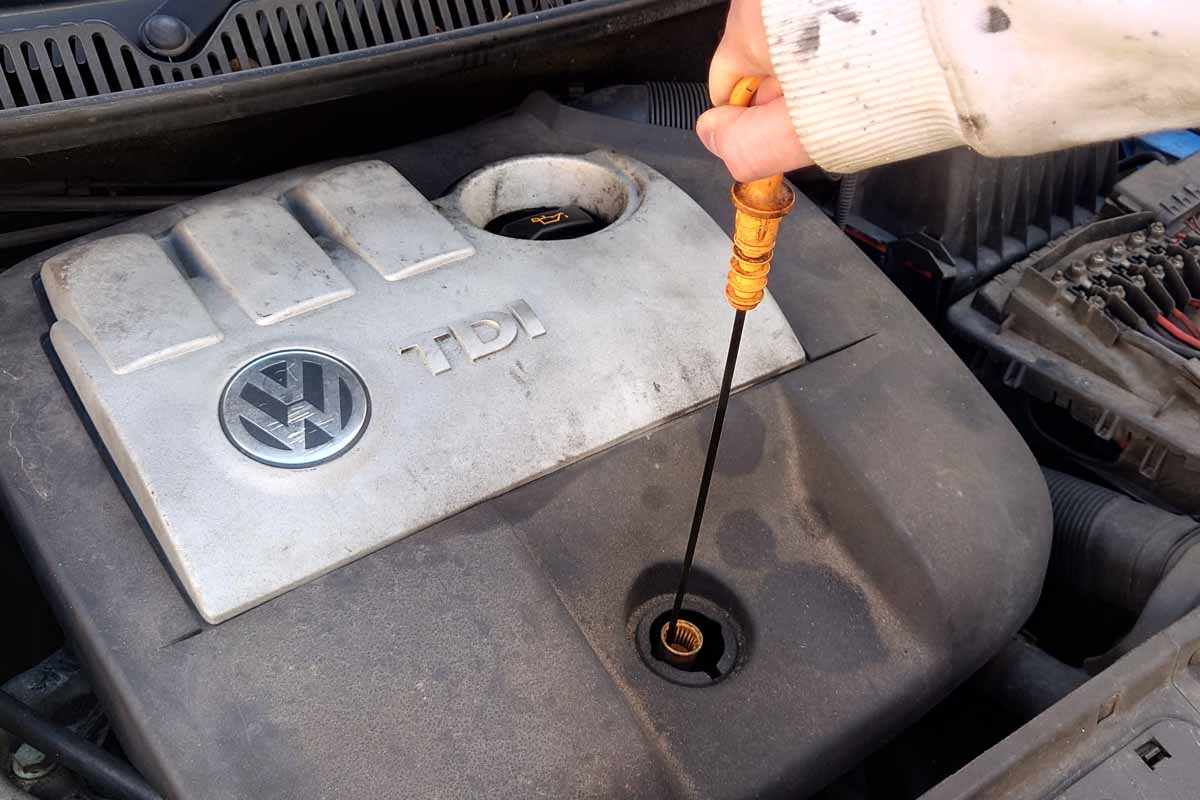
You do not have to dip the dipstick for long—just a second or so will do. Then, all you need to do is pull it out again gently, taking care not to smudge the oil on the end of the dipstick, which may make it harder to read.
Read the dipstick
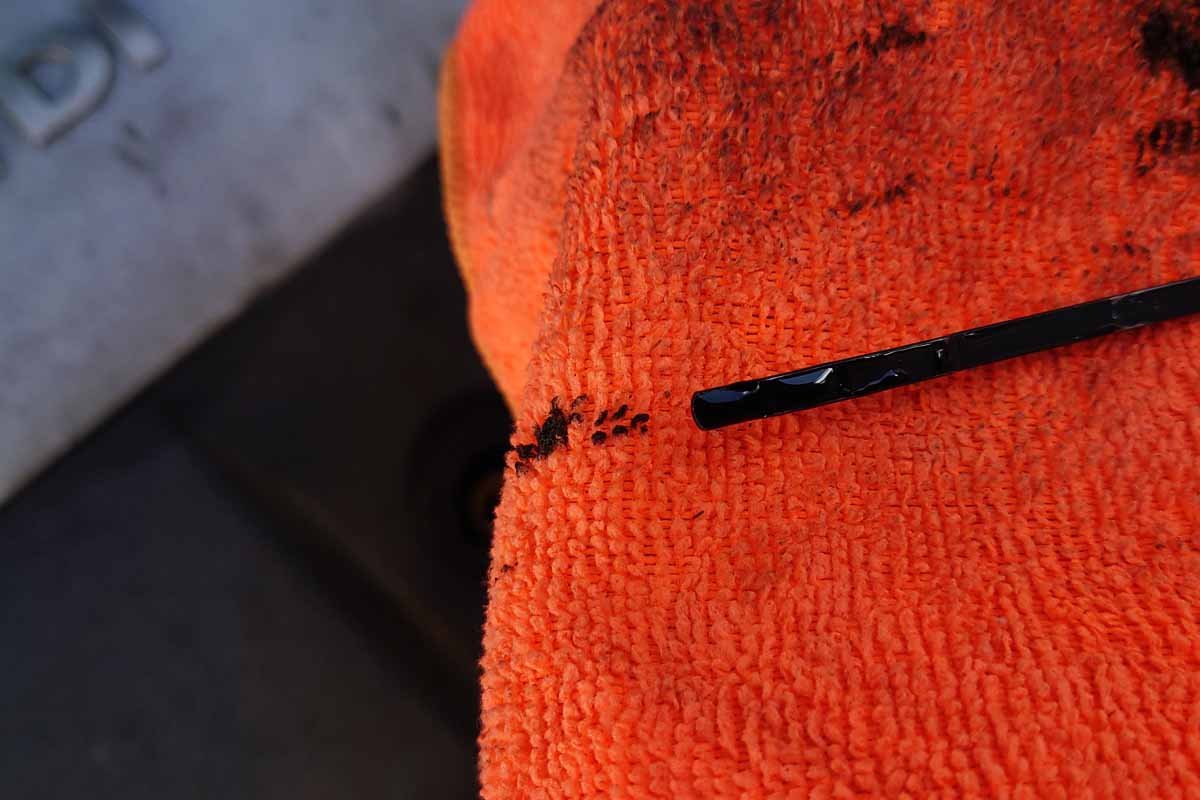
The dipstick has two kinks on the end. The bottommost kink represents the minimum fill line, and the uppermost kink represents the maximum fill line. Carefully examine the oil level between these two marks. Don’t worry if a stray bead or two makes it further up the stick than the rest of the oil; you’re looking for a consistent dip mark of oil on your dipstick.
It may be hard to read, as some dipsticks are made black or just turned black by soaking in oil for years. You are okay as long as the oil line is between the minimum and the maximum fill line.
FAQs
What do you do if your car oil level is too low?
Don’t panic. Your car oil will get low from time to time. All you need to do is top it up with the appropriate oil for your car. If you don’t know this, a quick Google search or a look in your car owner’s manual will tell you. The most common car oil around is 5w 30. But please check with your manufacturer before topping up your oil.
What do you do if your car oil level is too high?
This problem, in contrast to your oil being too low, is a bit more serious. If your car oil level is too high, it needs to be drained immediately via the oil sump plug at the bottom of your oil pan under the car. Too much oil in the engine can result in many issues that nobody needs, such as oil in the exhaust, combustion chamber, or leaking.
It’s best to drain all of the engine oil and fill it back up from scratch, as trying to plug the oil pan again mid-flow would make for a messy job. Your car owner’s manual should dictate how much oil you should put in your car; if not, a quick Google search should reveal the answer.
Do you check the oil when the engine is hot or cold?
Some car’s oil should be checked when the engine is warmed, but never hot. Oil, when stressed, can reach temperatures of over 100°C in most cases.
Some cars measure the engine oil electronically, which likely means your car does not have a dipstick to check the oil manually. In this case, it is safe to assume that you should measure the oil when it is warm.
If your car has a dipstick, it’s safe to assume you should check the engine oil cold. This is because the dipstick reads the oil level from the oil pan; only when the engine is off will all the oil be present in the oil pan. Also, you don’t want to burn yourself on piping-hot oil, do you?
Why is engine oil so important?
In a nutshell, engine oil does many beneficial things for your engine, first and foremost it is a lubricant, protecting intricate moving parts from the damaging friction your engine experiences daily. Engine oil is also a coolant, transferring heat from the controlled detonations happening in the combustion chambers of your engine block. Without oil, your engine would overheat and warp irreparably,
Oil is also a cleaner, keeping combustion residue and dust at bay. Without engine oil, this dust could build up and clog your engine’s vital components, leading to inefficiencies and, eventually, failure.
Oil plays a pivotal role in your engine; without it, it would not function very long. One of the best things you can do for your car is to ensure it has enough of the right oil and is cleaned regularly according to your owner’s manual.


